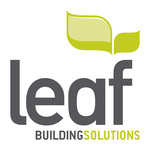Differences between climaboard and similar systems
There are a number of other designs on the market today that look like Climaboard in that they are low profile and closely resemble ordinary skirting boards. However, that’s where the similarity ends.
The benefits of Climaboard over these systems are:
Lower surface temperature
Most of these other systems are based on the use of an aluminum extrusion that instead of having separate copper pipes to carry the hot water, has holes within the aluminum extrusion itself. This means that the fascia gets as hot as the water passing through it which in some cases may be too hot. The Climaboard fascia never comes into contact with either the hot water or the twin copper pipes, which are threaded through aluminium fins that are in turn in contact with the fascia. This means that the fascia never gets as hot as the water running through the pipes.
More efficient
Climaboard draws air from floor level upwards around twin copper pipes and aluminium fins, efficiently transferring heat energy from the water in the pipes to the air in the room, as in a convector heater. The solid aluminium systems, however, radiate heat from the surface of the skirting resulting in a less efficient transmission of heat into the room. This is typically less than half the efficiency of Climaboard which produces, for example at water temperature of 70OC, 240 Watts per meter compared to 146 Watts per meter in other systems.
Lower purchase price
Since Climaboard is not only more efficient but can be run safely at a higher water temperature, much less Climaboard is needed to achieve the desired room temperature - hence lower capital cost for similar operating costs.
For example, in a 15,4 m2 room with heat looses 1540 W and input water temperature 70OC we will need:
At 146W/m – 10,9m of other skirting heating
At 240W/m – 6,4m of Climaboard


